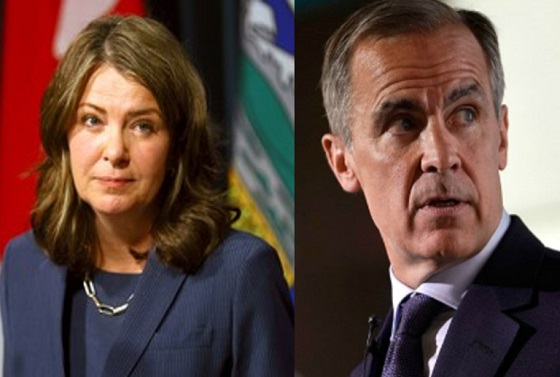This article was originally published in a collected volume, Canada’s Governance Crisis, which outlines Canada’s policy paralysis across a wide range of government priorities. Read the full paper here.
By Heather Exner-Pirot
Government has imposed a series of regulatory burdens on the energy industry, creating confusion, inefficiency, and expense
Oil arguably remains the most important commodity in the world today. It paved the way for the industrialization and globalization trends of the post-World War II era, a period that saw the fastest human population growth and largest reduction in extreme poverty ever. Its energy density, transportability, storability, and availability have made oil the world’s greatest source of energy, used in every corner of the globe.
There are geopolitical implications inherent in a commodity of such significance and volume. The contemporary histories of Russia, Iran, Venezuela, Saudi Arabia, and Iraq are intertwined with their roles as major oil producers, roles that they have used to advance their (often illiberal) interests on the world stage. It is fair to ask why Canada has never seen fit to advance its own values and interests through its vast energy reserves. It is easy to conclude that its reluctance to do so has been a major policy failure.
Canada has been blessed with the world’s third largest reserves of oil, the vast majority of which are in the oil sands of northern Alberta, although there is ample conventional oil across Western Canada and offshore Newfoundland and Labrador as well. The oil sands contain 1.8 trillion barrels of oil, of which just under 10 percent, or 165 billion barrels, are technically and economically recoverable with today’s technology. Canada currently extracts over 1 billion barrels of that oil each year.
The technology necessary to turn the oil sands into bitumen that could then be exported profitably really took off in the early 2000s. Buoyed by optimism of its potential, then Prime Minister Stephen Harper pronounced in July 2006 that Canada would soon be an “energy superproducer.” A surge of investment came to the oil sands during the commodity supercycle of 2000-2014, which saw oil peak at a price of $147/barrel in 2008. For a few good years, average oil prices sat just below $100 a barrel. Alberta was booming until it crashed.
Two things happened that made Harper’s prediction fall apart. The first was the shale revolution – the combination of hydraulic fracturing and horizontal drilling that made oil from the vast shale reserves in the United States economical to recover. Until then, the US had been the world’s biggest energy importer. In 2008 it was producing just 5 million barrels of crude oil a day, and had to import 10 million barrels a day to meet its ravenous need. Shale changed that, and the US is now the world’s biggest oil producer, expecting to hit a production level of 12.4 million barrels a day in 2023.
For producers extracting oil from the oil sands, the shale revolution was a terrible outcome. Just as new major oil sands projects were coming online and were producing a couple of million barrels a day, our only oil customer was becoming energy self-sufficient.
Because the United States was such a reliable and thirsty oil consumer, it never made sense for Canada to export its oil to any other nation, and the country never built the pipeline or export terminal infrastructure to do so. Our southern neighbour wanted all we produced. But the cheap shale oil that flooded North America in the 2010s made that dependence a huge mistake as other markets would have proven to be more profitable.
If shale oil took a hatchet to the Canadian oil industry, the election of the Liberals in 2015 brought on its death by a thousand cuts. For the last eight years, federal policies have incrementally and cumulatively damaged the domestic oil and gas sector. With the benefit of hindsight in 2023, it is obvious that this has had major consequences for global energy security, as well as opportunity costs for Canadian foreign policy.
Once the shale revolution began in earnest, the urgency in the sector to be able to export oil to any other market than the United States led to proposals for the Northern Gateway, Energy East, and TMX pipelines. Opposition from Quebec and BC killed Energy East and Northern Gateway, respectively. The saga of TMX may finally end this year, as it is expected to go into service in late 2023, billions of dollars over cost and years overdue thanks to regulatory and jurisdictional hurdles.
Because Canada has been stuck selling all of its oil to the United States, it does so at a huge discount, known as a differential. That discount hit a staggering US$46 per barrel difference in October 2018, when WTI (West Texas Intermediate) oil was selling for $57 a barrel, but we could only get $11 for WCS (Western Canada Select). The lack of pipelines and the resulting differential created losses to the Canadian economy of $117 billion between 2011 and 2018, according to Frank McKenna, former Liberal New Brunswick Premier and Ambassador to the United States, and now Deputy Chairman of TD Bank.
The story is not dissimilar with liquefied natural gas (LNG). While both the United States and Canada had virtually no LNG export capacity in 2015, the United States has since grown to be the world’s biggest LNG exporter, helping Europe divest itself of its reliance on Russian gas and making tens of billions of dollars in the process. Canada still exports none, with regulatory uncertainty and slow timelines killing investor interest. In fact, the United States imports Canadian natural gas – which it buys for the lowest prices in the world due to that differential problem – and then resells it to our allies for a premium.
Canada’s inability to build pipelines and export capacity is a major problem on its own. But the federal government has also imposed a series of regulatory burdens and hurdles on the industry, one on top of the other, creating confusion, inefficiency, and expense. It has become known in Alberta as a “stacked pancake” approach.
The first major burden was Bill C-48, the tanker moratorium. In case anyone considered reviving the Northern Gateway project, the Liberal government banned oil tankers from loading anywhere between the northernmost point of Vancouver Island to the BC-Alaska border. That left a pathway only for TMX, which goes through Vancouver, amidst fierce local opposition. I have explained it to my American colleagues this way: imagine if Texas was landlocked, and all its oil exports had to go west through California, but the federal government banned oil tankers from loading anywhere on the Californian coast except through ports in San Francisco. That is what C-48 did in Canada.
Added to Bill C-48 was Bill C-69, known colloquially as the “no new pipelines” bill and now passed as the Impact Assessment Act, which has successfully deterred investment in the sector. It imposes new and often opaque regulatory requirements, such as having to conduct a gender-based analysis before proceeding with new projects to determine how different genders will experience them: “a way of thinking, as opposed to a unique set of prescribed methods,” according to the federal government. It also provides for a veto from the Environment and Climate Change Canada Minister – currently, Steven Guilbeault – on any new in situ oil sands projects or interprovincial or international pipelines, regardless of the regulatory agency’s recommendation.
The Alberta Court of Appeal has determined that the act is unconstitutional, and eight other provinces are joining in its challenge. But so far it is the law of the land, and investors are allergic to it.
Federal carbon pricing, and Alberta’s federally compatible alternative for large emitters, the TIER (Technology Innovation and Emissions Reduction) Regulation, was added next, though this regulation makes sense for advancing climate goals. It is the main driver for encouraging emission reductions, and includes charges for excess emissions as well as credits for achieving emissions below benchmark. It may be costly for producers, but from an economic perspective, of all the climate policies carbon pricing is the most efficient.
Industry has committed to their shareholders that they will reduce emissions; their social license and their investment attractiveness depends to some degree on it. The major oil sands companies have put forth a credible plan to achieve net zero emissions by 2050. One conventional operation in Alberta is already net zero thanks to its use of carbon capture technology. Having a predictable and recognized price on carbon is also providing incentives to a sophisticated carbon tech industry in Canada, which can make money by finding smart ways to sequester and use carbon.
In theory, carbon pricing should succeed in reducing emissions in the most efficient way possible. Yet the federal government keeps adding more policies on top of carbon pricing. The Canadian Clean Fuel Standard, introduced in 2022, mandates that fuel suppliers must lower the “lifecycle intensity” of their fuels, for example by blending them with biofuels, or investing in hydrogen, renewables, and carbon capture. This standard dictates particular policy solutions, causes the consumer price of fuels to increase, facilitates greater reliance on imports of biofuels, and conflicts with some provincial policies. It is also puts new demands on North American refinery capacity, which is already highly constrained.
The newest but perhaps most damaging proposal is for an emissions cap, which seeks to reduce emissions solely from the oil and gas sector by 42 percent by 2030. This target far exceeds what is possible with carbon capture in that time frame, and can only be achieved through a dramatic reduction in production. The emissions cap is an existential threat to Canada’s oil and gas industry, and it comes at a time when our allies are trying, and failing, to wean themselves off of Russian oil. The economic damage to the Canadian economy is hard to overestimate.
Oil demand is growing, and even in the most optimistic forecasts it will continue to grow for another decade before plateauing. Our European and Asian allies are already dangerously reliant on Russia and Middle Eastern states for their oil. American shale production is peaking, and will soon start to decline. Low investment levels in global oil exploration and production, due in part to ESG (environmental, social, and governance) and climate polices, are paving the way for shortages by mid-decade.
An energy crisis is looming. Canada is not too late to be the energy superproducer the democratic world needs in order to prosper and be secure. We need more critical minerals, hydrogen, hydro, and nuclear power. But it is essential that we export globally significant levels of oil and LNG as well, using carbon capture, utilization, and storage (CCUS) wherever possible.
Meeting this goal will require a very different approach than the one currently taken by the federal government: it must be an approach that encourages growth and exports even as emissions are reduced. What the government has done instead is deter investment, dampen competitiveness, and hand market share to Russia and OPEC.
Heather Exner-Pirot is Director of Energy, Natural Resources and Environment at the Macdonald-Laurier Institute.
Related





















